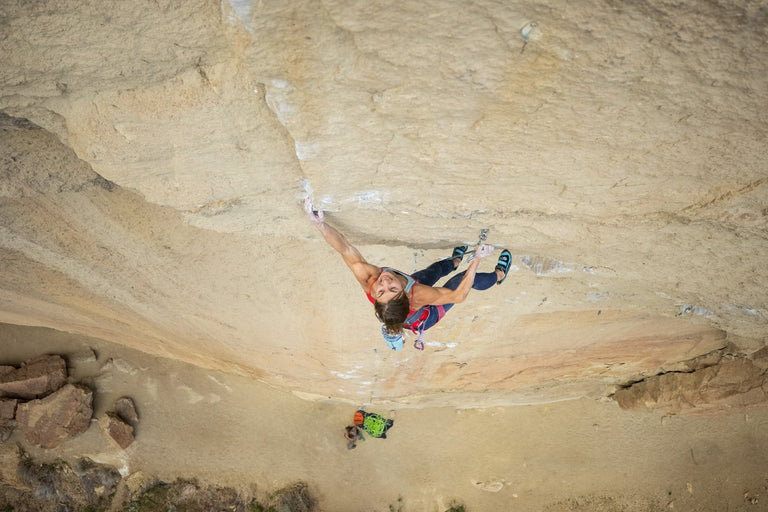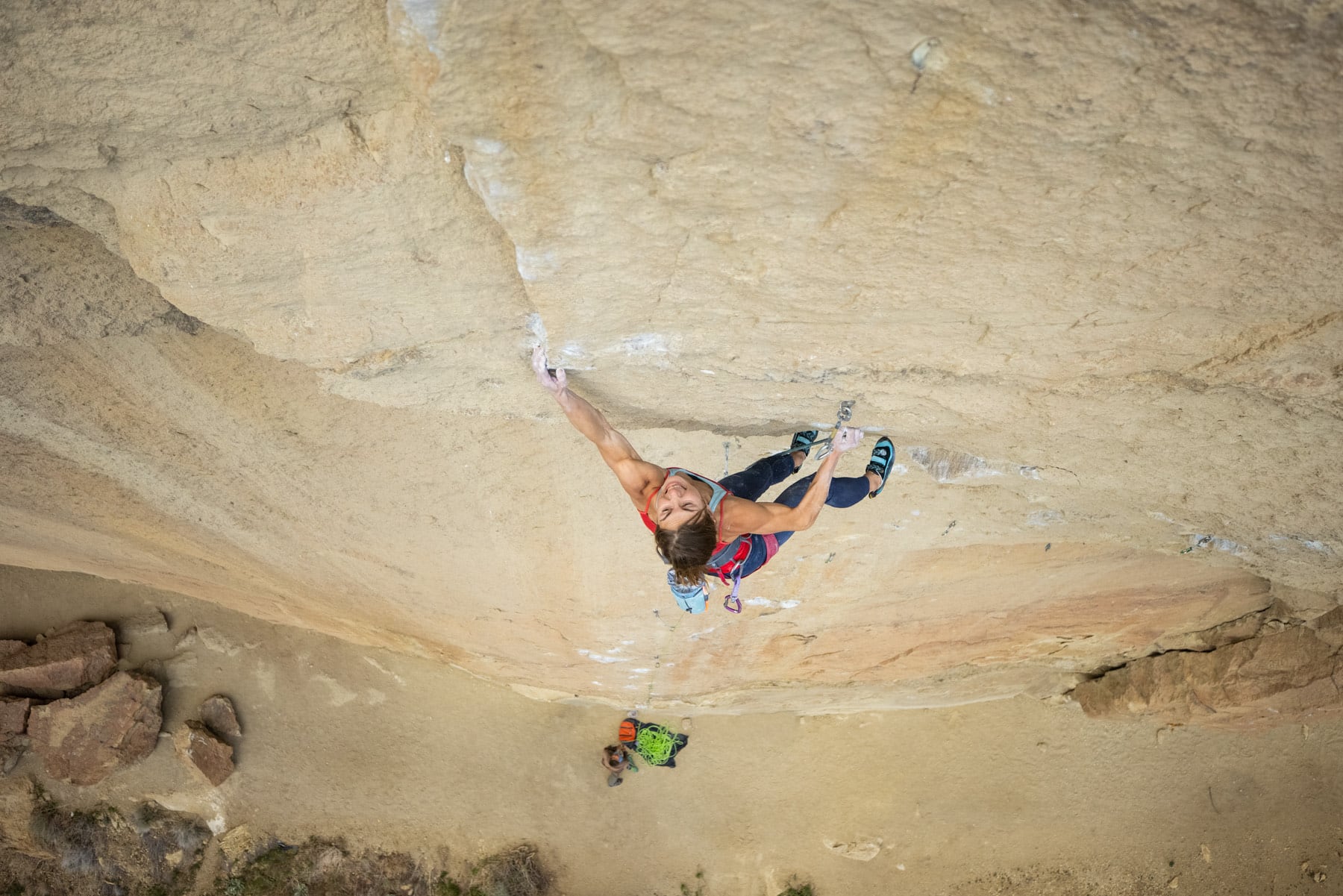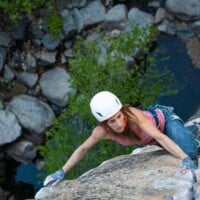Editors Note: At Gnarly we feel it is important to bring awareness to RED-S (formally referred to as the Female Athlete Triad) as it relates to the health and performance of athletes (including men). Readers must know we are not attempting to diagnose or treat any medical conditions in this article.
This is the final part of Jasna’s RED-S series. Please read the first blog post here and the second here.
Most of us remember our 30th birthday. No longer young, yet neither old, the third decade is said to be a period of clarity, bringing heightened self-awareness and confidence.
For me, it certainly felt like a transition: finishing up five years of graduate school, I was preparing to embrace change. Yet, I was also preoccupied with another deadline – around 30, we stop building bone.
At 26, I went to see my gynecologist, hoping to change my birth control. Feeling healthy and strong, I expected a routine appointment. Yet, over a series of doctor’s visits, I discovered that, despite no noticeable loss in energy, strength, or weight, my bone density had been silently decreasing for years. It was severe enough that I had osteopenia, a condition that occurs when the body does not make new bone as quickly as it reabsorbs old bone. Were it to continue, I would certainly develop osteoporosis, an irreversible disease in which bones are brittle and fracture easily.
I was diagnosed with relative energy deficiency in sport (RED-S), a condition where the body does not take in enough energy to meet the demands placed on it. For women, this results in hormonal imbalances that reduce estrogen, a hormone critical for bone health.
The conversations I had with doctors and specialists remain muffled in my memory. But, the numbers are glass, clear and sharp: In parts of my body, I had 81% of normal bone density; I had around four years (until I turned 30) of time left to build the bone back.
The doctors were optimistic, and, after receiving a scan two years later, I was too; my numbers were improving, though I technically still had osteopenia. I read a number of personal accounts of men and women diagnosed with RED-S, yet, never found a story of recovered bone density loss. It was easy to feel alone in my journey without a timeline, without benchmarks, and without a roadmap. I had to trust that my body would set itself right, if I was on its side.

Beleaguered from a long night of work, a month left until I graduated, my third and final bone density scan felt easy. I laid beneath what looked like a human scanner, closed my eyes, and nearly fell asleep to the rhythmic, mechanical hum of the machine. Jolted awake by the “you’re all set!” of the technician, I was told I would receive the results within a few hours.
Though I felt confident that my test would show improvement, I cautioned myself – four years ago, I nonchalantly skimmed my scan summary, certain that I was perfectly healthy. The weight of that belief boomeranged back at me and the shock of how wrong I was left me reeling in painful humility. Now, my cursor hovering over the email that contained my test results, it was hard not to wonder: what would it mean for my future if I just did not have enough time to fully reverse the process? I willed myself to push the speculation away and clicked on the email.
My eyes skimmed the page, looking for numbers. Finally, I settled on the bold statement: “96% of normal bone density.” Further down, I read “there has been a statistically significant increase in bone mineral density at lumbar spine and bilateral hips compared to the prior study “
I was okay. In the past two years, my bone density increased significantly. A tight, wound-up spring within me finally unwound as I marveled at the unknown strength, resilience, and recovery capacity of my own body.

A few weeks after my scan, I completed one of my hardest rock climbs. The route is defined by a series of three very powerful moves which I undoubtedly was not strong enough to fathom doing four years ago. In fact, despite a jarring test result that told me I was “unhealthy” I had steadily, and sometimes even precipitously, progressed in my climbing over the past four years. This route was my seventh 5.14. In 2017, when I received my first scan, I had just finished my seventh 5.13.
Succeeding on this route only a few weeks after finally shedding the label of “osteopenia” made me particularly reflective. I wondered: how did I reverse bone loss while excelling at my sport?
Certainly, I followed my doctor’s advice. I made sure I ate something every few hours, a habit that was initially difficult to engrain. I weigh myself often, to make sure I stay above, rather than below, a certain number. This was the easier part, the habits that became routine. Yet, it did not feel like the entire story.
RED-S is a physical condition. However, as I considered what changed over the last few years, I realized that it was my mental state that swung the pendulum in my favor. How I approached myself decided whether I fell into those same patterns that may have left me vulnerable in the first place: a seemingly innocuous focus on sport, but also a pissed-off attitude toward what people thought about how I looked.
As a naturally lean and muscular woman, it is obvious that the way that I look often catches the attention of others. And, perhaps because people think I view their words as compliments, they feel comfortable and emboldened in letting me know about it. Some of the comments I am used to receiving are benign, some are rude, and, occasionally, some are flagrantly inappropriate. Whatever the intent of the speaker, they all succeed in shifting my attention, even for a moment, to my largely immutable appearance.
Early, before my diagnosis, much of my confidence was wholly physical; I loved and took pride in my athleticism and energy. Yet, when I linked my enjoyment of activity and movement with my appearance, that trust in my body suddenly became a source of great, internal scrutiny. Still, since nothing I ever heard was exceptionally dramatic, neither was my reaction. However, enough subtle attention and behavioral shifts accumulated to become equally as pernicious; small taps with a hammer eventually tore the house down.
Though I never let myself go hungry, I did not eat enough to support my activity levels because I, reacting to what I heard and was told, was simultaneously afraid of both losing muscle, and gaining more of it. This fear, though, was never mine. This fear was always masked by the shadows of others towering over it.
The truth is that while I was not afraid of gaining muscle, I was terrified that my appearance would not be approved by my peers. Consequently, I seldom dared to just be myself. So, I teetered dangerously on a futile goal of maintaining my body’s status-quo, despite steadily increasing my climbing.
During my recovery, as I ate more, I eventually gained a little bit of fat, but also a lot of muscle. People noticed. Often, I leave these conversations bothered and, sometimes, angry. I feel angry at people for saying anything, and I feel angry that I never talk back. Instead, I tend to handle these situations like I would a conversation with a police officer: be as polite as possible to speed up the interaction.
In the end, my only option was to not care. I worked hard to regain the confidence I had in my body, and cultivate resiliency in my mind.
To do so, I re-learned a truth I had known all along; any unsolicited comment – from a crude joke, to a simple compliment, to an insolent remark – has everything to do with the speaker and nothing at all to do with me. It sounds simple, and it sounds obvious, but this is a very difficult decision that I, with effort, must remake every single day. When I feel an instinctual emotional reaction to a comment from a stranger, I am brought back to a younger version of myself. I see that in her attempt to be apathetic – to shrug it off – she pushed the problem deeper, where it would later manifest itself in other ways. The process of admitting vulnerability and reshaping instinctual, even primal, mental pathways has been harder than any 5.14 I have ever done. Some days are better than others, but when I saw those numbers, I was proud of myself.
I once thought that, because I had never explicitly dieted, my RED-S was a stroke of bad luck or a genetic predisposition. Perhaps this is partly true, but my hyper-preoccupation with the views of others fed flames of my condition and nearly cost me everything. I had to get over this, too. I had to forgive myself.
RED-S is extremely serious, but it is treatable, and, if caught early enough, even reversible. A chance encounter with a kind, considerate doctor, as well as access to good health care, has, more than likely, irrevocably changed my life.
Still, though my bone density is high in my hips and back, it is only just barely “good enough” in my neck. I also continue to deal with lingering mental effects. The signals from stress, normal fatigue, and over-training are, superficially, the same as those of RED-S and energy unavailability. Having misinterpreted them before, I now tread cautiously, perhaps overly so, and can be paralyzed with indecision when it comes to basic questions athletes confront like recovery, fuel, and load. Finally, time will only tell if I have dodged the serious, chronic, long-term effects of the condition, including those effects that, unlike bone density, are difficult to quantitatively measure.
I am certain that my situation is not unique. Threading the needle between performance and health can already be difficult. It is made doubly so when the singular wisdom of your own body is overpowered by the thousands of other voices competing for your attention. Make no mistake, it is an easy trap to silently and unknowingly fall into. Yet, it is worth everything in the world to avoid, because, as I know intimately, a fixation on others truly means negligence of the self, which can come with frightening, surprising consequences.
My advice: give yourself the chance to actually listen to your body and embrace the uncomfortable time where you let it find where it wants to be, because – trust me – that is where you want to be, too.





